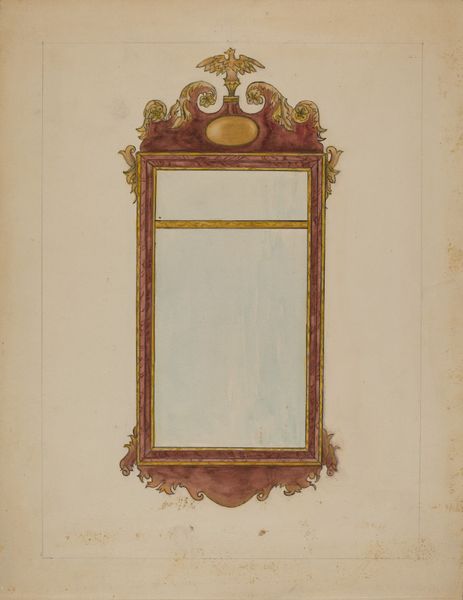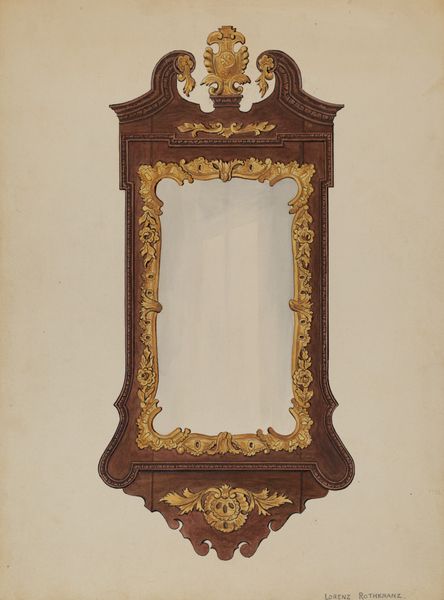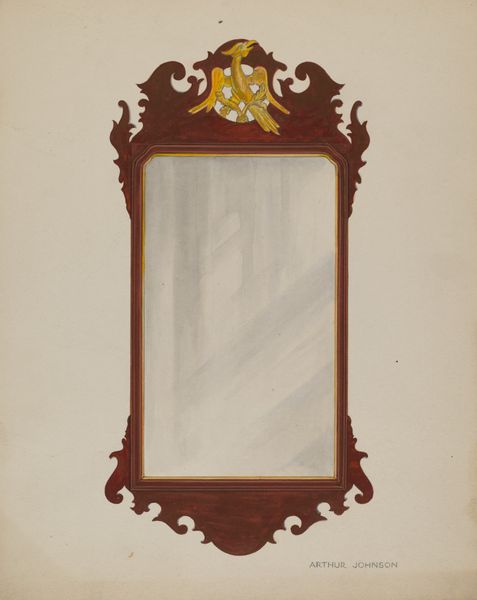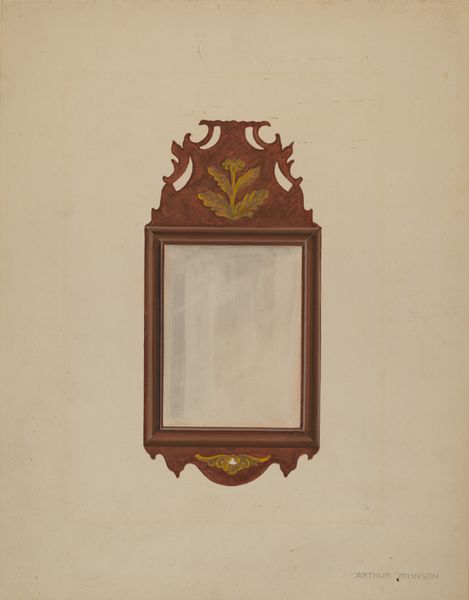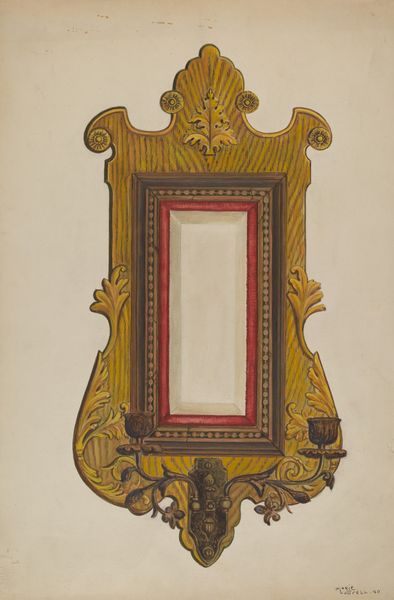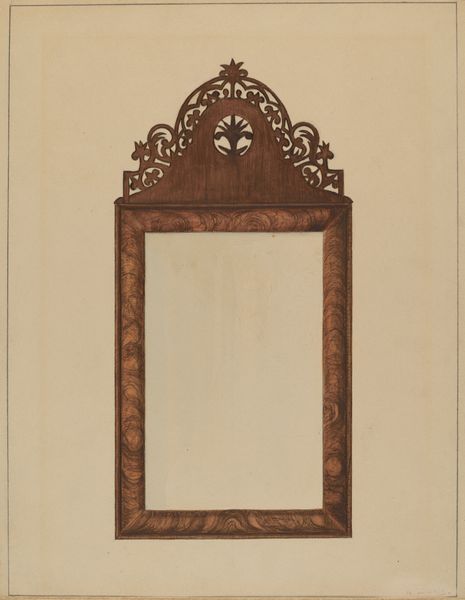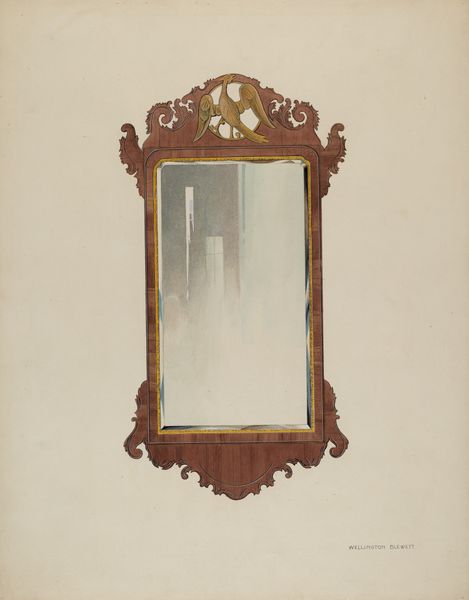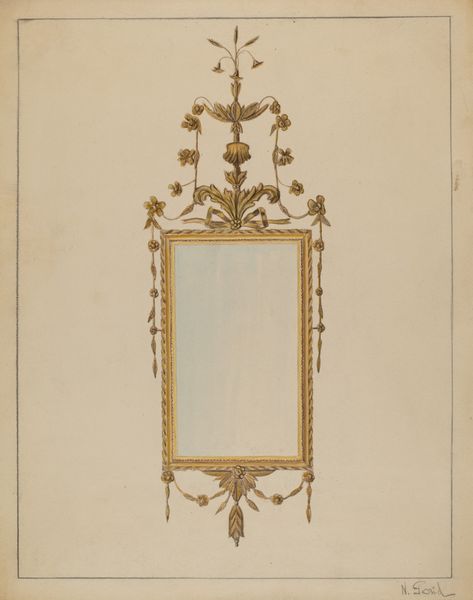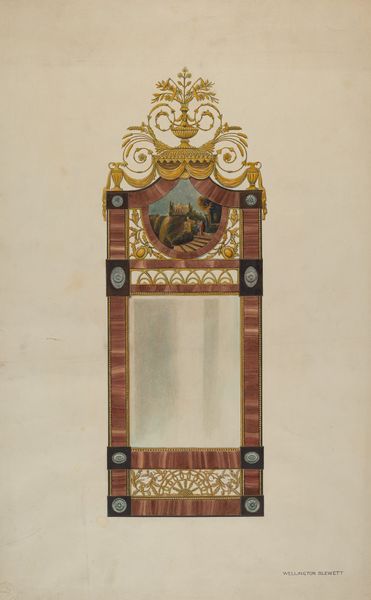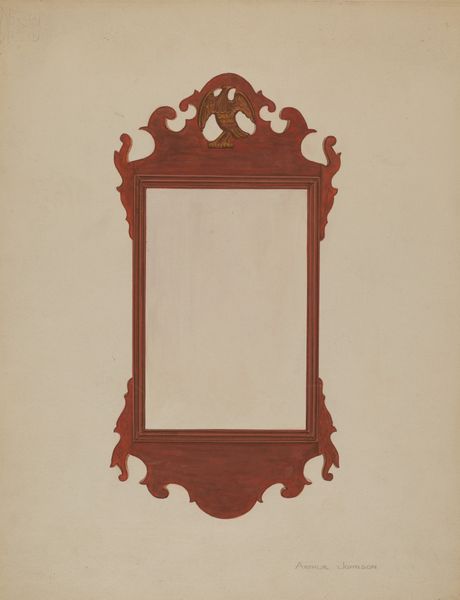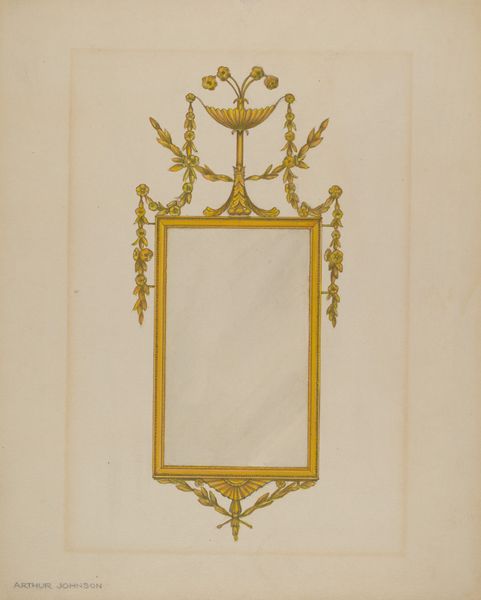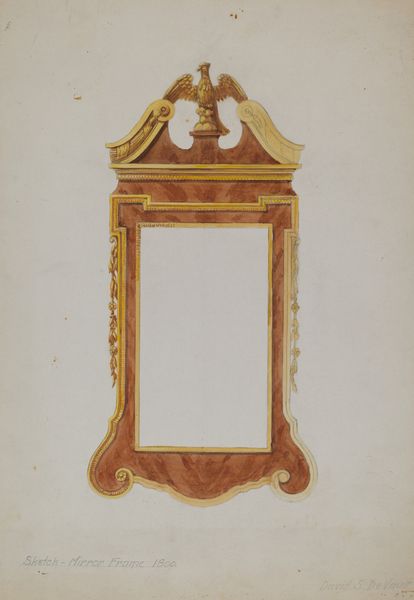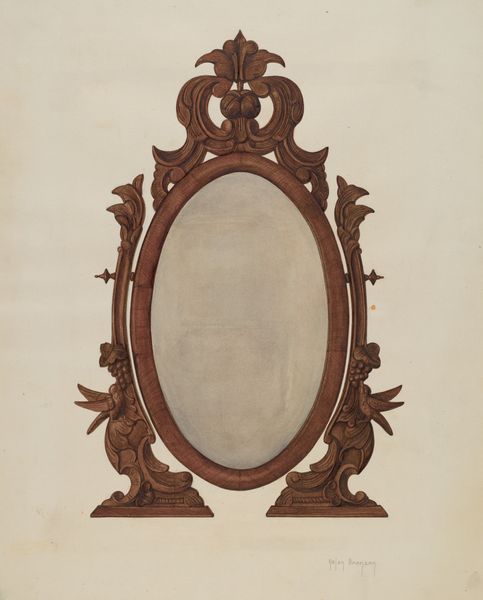
drawing, watercolor
#
drawing
#
water colours
#
watercolor
#
watercolor
#
realism
Dimensions: overall: 35.1 x 24.4 cm (13 13/16 x 9 5/8 in.) Original IAD Object: 43"high; 17 1/2"wide; diam. of circle on crest: 6".
Copyright: National Gallery of Art: CC0 1.0
Editor: We're looking at a watercolor drawing titled "Queen Anne Mirror," created around 1939 by Leslie Macklem. I'm struck by how the artist renders the aged, almost distressed, quality of the mirror. What stands out to you about it? Curator: For me, it's about the materials themselves and their relationship to value. Macklem's choice of watercolor, a medium often associated with studies and preliminary work, to depict a "Queen Anne" style mirror, usually made of valuable materials like polished wood, gold leaf, and pristine glass, makes me think about class. Editor: Class? How so? Curator: Well, think about the social context. The Queen Anne style, originally representing affluence, is here rendered using inexpensive materials during the Depression era. Watercolor was widely available, inexpensive. So, what does it mean to depict an object signifying wealth using such humble means? Is it aspirational, a comment on shifting economic realities, or perhaps a re-evaluation of what we consider precious? Also, consider drawing and watercolor are used to document precious object, but are traditionally considered not fine art objects. This is not a celebration as much as a record, a document. Editor: That's a fascinating perspective. So you see the artwork as less about the aesthetic qualities of the mirror itself, and more about the labor and the materials involved in its depiction. Curator: Exactly. I mean, why this subject? Was there some fascination with the class the real thing represented, even though the mirror depicted here doesn't convey the wealth that one would see if this was a real object made from traditional 'fine art' material? What does the reproduction tell us about value and authenticity in a changing society? Editor: That completely reframes my understanding of it! It’s more than just a pretty picture; it's a commentary on the social and economic climate of the time, cleverly disguised within a seemingly simple drawing. Thank you, that's eye-opening. Curator: Absolutely. And it demonstrates how even seemingly straightforward depictions of objects can hold profound insights into labor and economic factors.
Comments
No comments
Be the first to comment and join the conversation on the ultimate creative platform.
